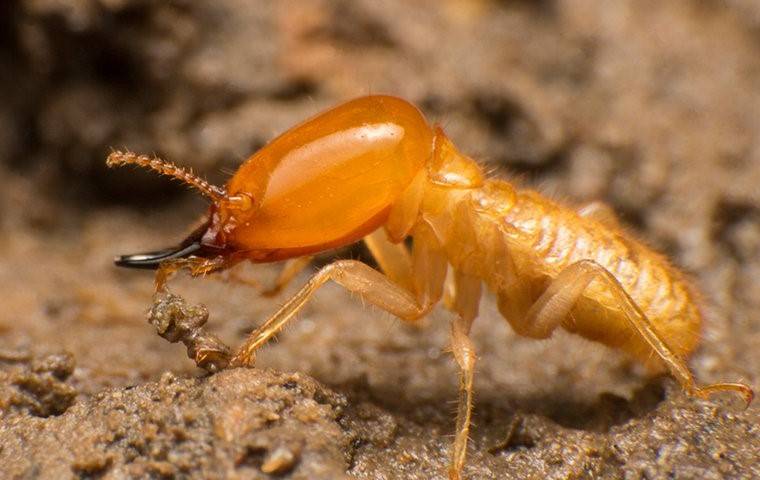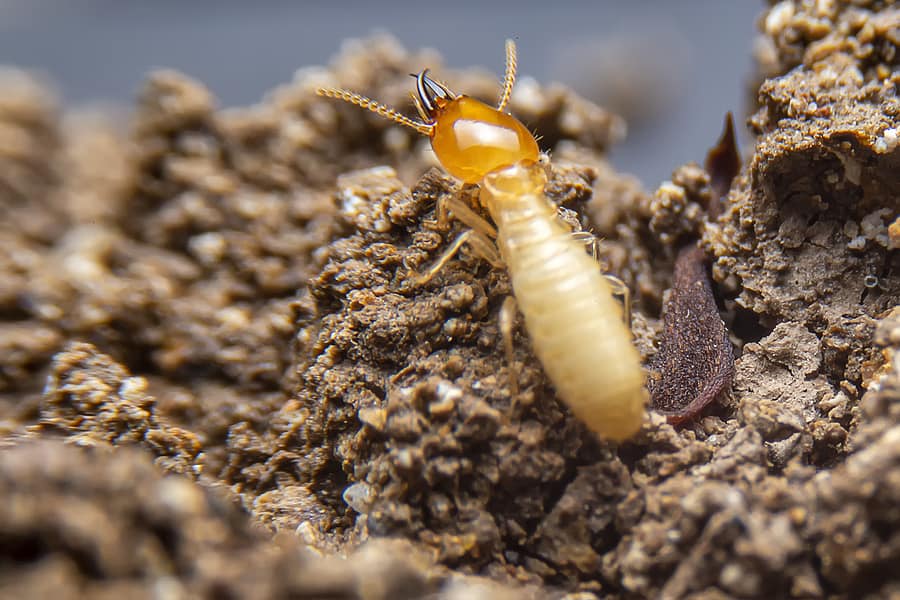How to avoid Termite Infestation in Your Home: Professional Parasite Control Tips
Termite infestation can position a significant hazard to the architectural honesty of your home, creating substantial damages if left unattended. As home owners, recognizing the very early indications of a termite existence is vital in preventing problems before they intensify.
Identify Early Indicators of Infestation
Caution is crucial in spotting the very early signs of termite invasion within your home. These destructive parasites can trigger significant damages if left unattended, making it vital to identify indicators of their existence without delay. One typical sign of a termite problem is the existence of discarded termite wings near doors and windowsills. As termites throng and establish new nests, they lost their wings, leaving them behind as evidence of their activity.
Furthermore, mud tubes along the foundation of your home can indicate a termite invasion (Termite Control Homestead). These pencil-sized tubes provide shelter for termites as they travel between their nest and a food source. Hollow-sounding or broken timber, particularly in areas vulnerable to moisture such as attics and cellars, may likewise signify a termite infestation. It is vital to resolve any kind of such indicators right away to avoid additional damage to your residential or commercial property.
Routine inspections by a parasite control specialist can help identify termite task at an early stage, potentially conserving you from pricey fixings in the long run. By remaining cautious and proactive, you can safeguard your home from termite problems and keep its architectural honesty.
Maintain Proper Air Flow and Wetness Levels
To efficiently protect your home versus termite problem, preserving appropriate ventilation and controlling dampness degrees is essential in protecting against favorable conditions for these destructive insects. Termites thrive in damp environments, making it essential to maintain locations such as cellars, creep rooms, and attic rooms completely dry and well-ventilated. Guarantee that vents are unblocked and operating successfully to enable appropriate air movement, minimizing the possibility of dampness accumulation. In addition, repair any type of leakages in plumbing, roofing systems, or windows promptly to stop water buildup that draws in termites.
Moisture degrees need to be maintained below 60% to prevent termite task. By taking these precautionary steps, you can develop a setting that is less welcoming to termites, minimizing the danger of invasion and potential damages to your home.
Seal Cracks and Gaps in Your Home


Evaluating and quickly sealing fractures and voids in your home is an important step in strengthening its defenses versus termite invasion. Termites can exploit even the smallest openings in your house's framework to access and trigger considerable damage. Conduct a thorough evaluation of both the exterior and interior of your home, paying attention to locations where various structure products satisfy, such as where the foundation meets the walls or where pipelines and wires enter the residence. Seal any type of cracks or voids found using appropriate materials like caulk or sealer. Focus on areas vulnerable to moisture accumulation, as termites are drawn in to damp original site atmospheres. Usual at risk areas consist of around doors and windows, in the structure, and in the attic or cellar. By proactively sealing these access points, you create a barrier that can aid prevent termites from penetrating your home and triggering costly damage. Routine upkeep and vigilance in attending to potential entry factors can go a lengthy way in protecting your home versus termite infestation.
Usage Termite-Resistant Products for Construction
When strengthening your home against termite invasion by sealing spaces and splits, it is vital to think about making use of termite-resistant products during building and construction. Termite-resistant materials are specifically designed to reduce or hinder down termite invasions, providing an included layer of defense to your building. These materials are commonly treated with chemicals that are toxic to termites or are naturally immune to termite assaults.
One usual termite-resistant product is pressure-treated wood, which has been impregnated with preservatives to make it less enticing to termites. In addition, making use of you can try these out steel, stonework, or concrete materials in building and construction can help in reducing the risk of termite damage as these materials are not prone to termite assaults.
It is vital to work closely with your specialist or builder to make certain that termite-resistant products are used in vital locations vulnerable to termite problem, such as the framing, structure, and outside wall surfaces. By incorporating termite-resistant materials into your home building, you can substantially decrease the possibility of termite problems in the future.
Schedule Regular Evaluations With Professionals
Routine assessments performed by accredited insect control professionals are crucial in preserving a termite-free environment in your house. These specialists have the knowledge to identify very early indicators of termite task that might go you can try this out unnoticed by untrained individuals. By scheduling normal assessments, any kind of possible termite invasion can be spotted and dealt with immediately, preventing comprehensive damage to your property.

Moreover, pest control experts can give customized recommendations to resolve any susceptabilities in your house that might bring in termites - Termite Control Homestead. This may consist of advice on moisture control, landscape design practices, and various other safety nets to decrease the risk of infestation. By investing in routine inspections with professionals, you can proactively safeguard your home from the pricey problems triggered by termite problems
Conclusion
Finally, avoiding termite problems in your home needs aggressive actions such as identifying early signs of problem, maintaining correct air flow and moisture levels, sealing spaces and cracks, utilizing termite-resistant materials, and scheduling normal assessments with experts. By carrying out these specialist pest control tips, you can protect your home from expensive damage created by termite invasions.
One common indication of a termite infestation is the presence of disposed of termite wings near doors and windowsills.To efficiently secure your home versus termite invasion, keeping proper air flow and regulating wetness degrees is crucial in avoiding favorable conditions for these devastating bugs.When fortifying your home versus termite problem by securing cracks and spaces, it is important to consider utilizing termite-resistant products during building. These materials are commonly treated with chemicals that are toxic to termites or are naturally resistant to termite attacks.
By spending in routine assessments with professionals, you can proactively secure your home from the expensive problems triggered by termite problems.